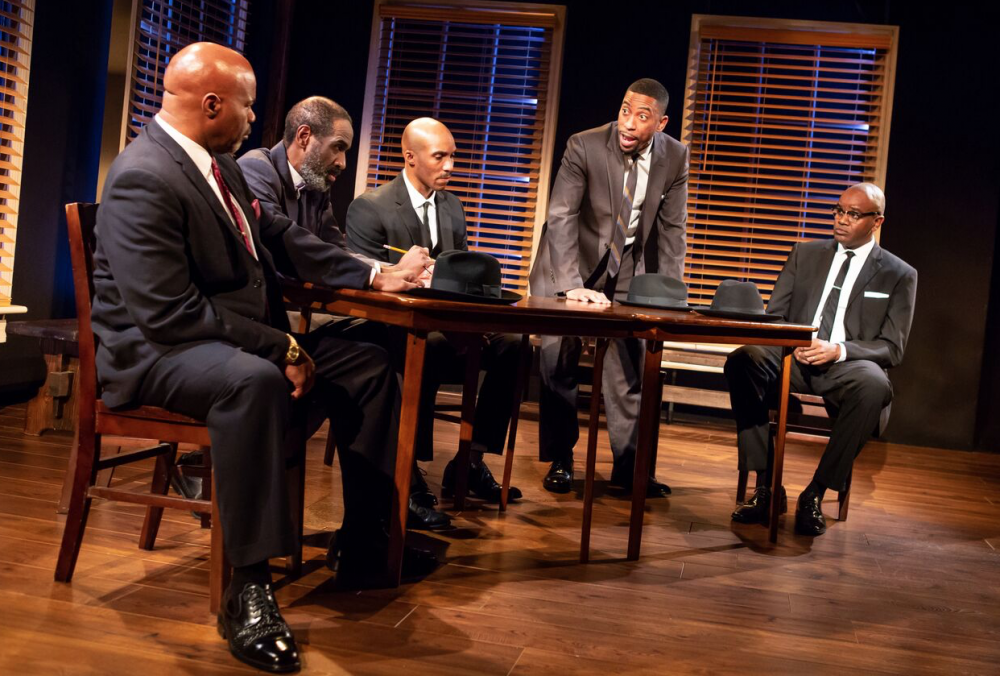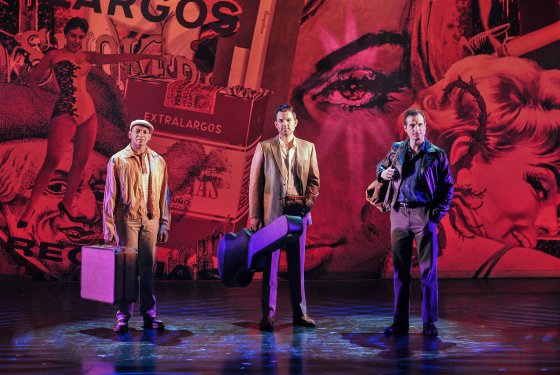by Martha Wade Steketee
What happens when private business interests align with public interests, and public servants determine to destroy existing communities for commercial gain? There are too few dramatic treatments of the effects of urban renewal that ran through most cities in the U.S in the mid-20th century from the perspective of the displaced homeowners. Travisville tells one version of a story that can strike fear into the hearts of property owners throughout America—if a road is needed, if a public interest can be articulated, the state may be able to take your land. Our dramatic question is: how can we respond?
Travisville is infused in glorious ways with first-time playwright William Jackson Harper’s actor sensibilities. His carefully-etched characters in an unnamed American southern town in 1964 confront sit-ins, generational shifts in power, and community change. Meaty individual monologues shine in this story inspired by mid-20th-century urban renewal and the communities that suffer when their history is eradicated through eminent domain, primarily told from the perspective of affected community members.
We first meet two young men on the verge of taking reins of power in the Minister’s Alliance leading their community in a small unnamed southern city in 1964. Ora Fletcher (calmly indecisive Bjorn DuPaty), hand-picked successor to Elder Alden Hearst (a delicately powerful Brian D. Coats), waits with fellow minister Darryl Gunn (restrained and mysterious Nathan James) for a meeting with the town’s white mayor. I had hopes for this structure, considering the range of potent one-set plays focused on groups making decisions on cases or lives or a community’s welfare.
Might Harper’s play, I wondered, be a riff on the Twelve Angry Men drama of jury deliberations, or a city council-inspired story such as Caridad Svich’s Town Hall or Tracy Letts’ The Minutes, that takes that council meeting frame and gives it a Shirley Jackson twist? Playwright Harper instead takes us on a conventionally-plotted adventure that moves in and out of meeting and council deliberations with a few too many characters, a few too many settings, unpacking the real-life ramifications of the costs of razing a community in the name of a new civic income generating scheme. Movement within and between scenes is choreographed masterfully by director Steve H. Broadnax III, and the simple set and lighting designs by Milagros Ponce de León and Adam Honoré are among the best I’ve seen in the small EST space, matching spare design choices to the material. The dramatic ride is potent with these assists, but the script is not fully realized.
Fletcher and Gunn wait for Mayor Gillette (a stumbling and affable Denny Dale Bess), a character that never earns his place in the telling of this story. Bess plays both the Mayor and the developer Honeycutt behind the proposed Travisville project at the center of the play’s action. These expendable and underwritten characters among at least a dozen, are the straw men in power against whom the other characters are striving. Elder Hearst is of the play-along-to-get-along generation with his eyes on the prize; Fletcher is his protégé struggling with his leadership style; Gunn has more revolutionary instincts and brings in organizer Zeke Phillips (handsome and charismatic Sheldon Best) from out of town to inspire and incite.
It is the arc of the local political compromises that provide the dramatic sparks in this story. Gunn speaks with the ministers early about the “moral imperative” of speaking up, standing up, however that happens. The ailing Elder Hearst initially reflects on his slow boil strategy of effecting change, notes—“since when does it matter if a Negro’s got right on his side?”—and eventually ends this passive stance. “I have spent my entire civic life building political capital,” he says, when he finally stands up for his community. “When do I get to spend it?” Young Fletcher, his anointed successor, initially stands between Gunn and Hearst, resists taking a side, and finally resolves to fight for change and stand with his community’s homeowners even if the white establishment is displeased. And there are those splendid monologues by wives and mechanics and other members of the community to illustrate the political debates of selling or hanging on to their property.
Elegant direction by Broadnax masks the fact that the many scenes make pieces out of the story. We want each character to be of service to the story trajectory: effecting and navigating social change. The rest of the richly crafted community characters have a voice and a story to tell. The play that hones those stories into one resonant whole is not yet here.
Travisville. Through October 28, 2018 at Ensemble Studio Theatre (545 West 52nd Street, between Tenth and Eleventh Avenues). Running time: 2 hours, with one intermission. www.ensemblestudiotheatre.org
Photos: Jeremy Daniel





















